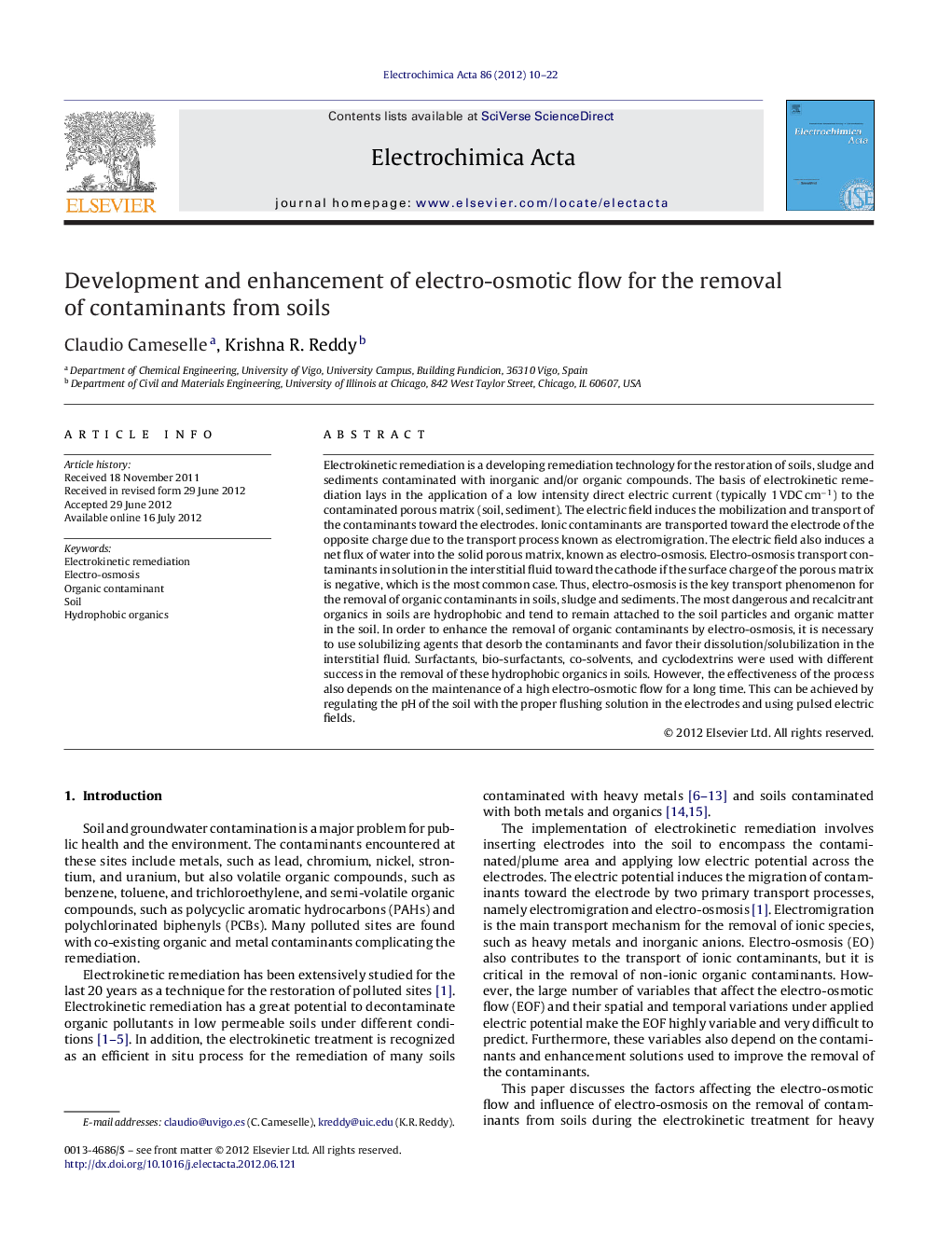| Article ID | Journal | Published Year | Pages | File Type |
|---|---|---|---|---|
| 187511 | Electrochimica Acta | 2012 | 13 Pages |
Electrokinetic remediation is a developing remediation technology for the restoration of soils, sludge and sediments contaminated with inorganic and/or organic compounds. The basis of electrokinetic remediation lays in the application of a low intensity direct electric current (typically 1 VDC cm−1) to the contaminated porous matrix (soil, sediment). The electric field induces the mobilization and transport of the contaminants toward the electrodes. Ionic contaminants are transported toward the electrode of the opposite charge due to the transport process known as electromigration. The electric field also induces a net flux of water into the solid porous matrix, known as electro-osmosis. Electro-osmosis transport contaminants in solution in the interstitial fluid toward the cathode if the surface charge of the porous matrix is negative, which is the most common case. Thus, electro-osmosis is the key transport phenomenon for the removal of organic contaminants in soils, sludge and sediments. The most dangerous and recalcitrant organics in soils are hydrophobic and tend to remain attached to the soil particles and organic matter in the soil. In order to enhance the removal of organic contaminants by electro-osmosis, it is necessary to use solubilizing agents that desorb the contaminants and favor their dissolution/solubilization in the interstitial fluid. Surfactants, bio-surfactants, co-solvents, and cyclodextrins were used with different success in the removal of these hydrophobic organics in soils. However, the effectiveness of the process also depends on the maintenance of a high electro-osmotic flow for a long time. This can be achieved by regulating the pH of the soil with the proper flushing solution in the electrodes and using pulsed electric fields.
